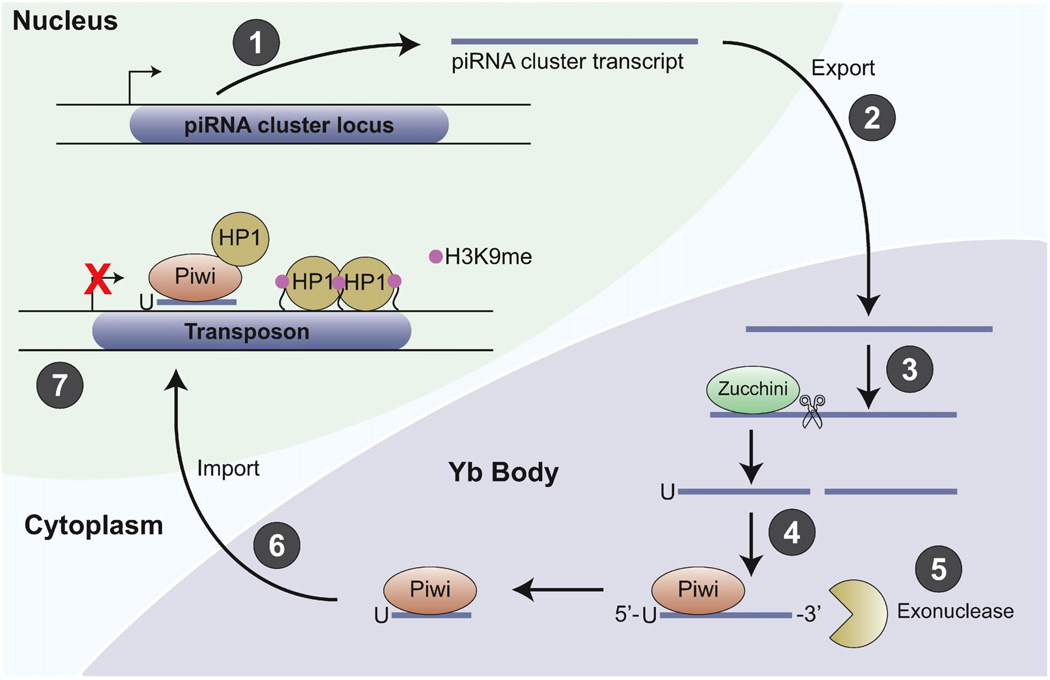Figure 1.
Primary piRNA processing in Drosophila ovarian somatic cells. The mechanism of primary piRNA processing is best understood in the somatic cells of the Drosophila ovary, but appears to be a conserved process that occurs in the Drosophila female germ cells and in other animals. Processing occurs as follows: (1) Primary processing starts with transcription of long, single-strand precursors from piRNA clusters in the genome. These loci often consist largely of dead transposon sequences. (2) Primary transcripts are exportedto the nucleus byan unknown mechanism, and primary processing occurs in cytoplasmic Yb Bodies. (3) Primary transcripts are cleaved into intermediate-sized RNAs by the endonuclease Zucchini. (4) Processed RNAs with a 5′-uridine are selected and bound by Piwi; the remaining RNA intermediates are likely unstable. (5) An unidentified exonuclease trims the 3′-end to create the mature piRNA. (6) The Piwi/piRNA complex is imported into the nucleus by an unknown mechanism; where (7) it is required for H3K9 methylation and transcriptional silencing of transposons. Piwi directly binds Heterochromatin Protein 1 (HP1) and thus may recruit HP1 to the chromatin.

